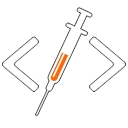The Importance of Using Next.js in Headless Websites
In the evolving landscape of web development, headless CMS (Content Management Systems) have gained immense popularity for their flexibility and scalability. When paired with a powerful front-end framework like Next.js, headless websites can achieve unparalleled performance and user experience. This article explores why Next.js is essential for headless websites and how it enhances modern web development.
What is Next.js?
Next.js is a React-based framework that provides a robust solution for server-side rendering (SSR), static site generation (SSG), and incremental static regeneration (ISR). It simplifies the development process and optimizes performance by offering built-in features and a flexible architecture.
Key Benefits of Using Next.js with Headless CMS
-
Enhanced Performance: Next.js enables server-side rendering and static site generation, which significantly improves load times and overall performance. This is especially important for headless websites, where fast and dynamic content delivery is crucial.
-
SEO Optimization: With server-side rendering and static site generation, Next.js ensures that search engines can crawl and index your website effectively, improving your SEO rankings.
-
Scalability: Next.js handles large volumes of traffic and content with ease. Its static generation and incremental static regeneration features allow you to build scalable websites that perform well under high loads.
-
Flexible Data Fetching: Next.js supports multiple data fetching methods, including server-side rendering, static generation, and client-side fetching. This flexibility allows you to choose the best approach for integrating with a headless CMS.
-
Developer Experience: Next.js offers a streamlined development experience with features like hot reloading, automatic code splitting, and built-in routing. These features simplify the development process and improve productivity.
Integrating Next.js with Headless CMS
Basic Setup
Integrating Next.js with a headless CMS involves fetching data from the CMS and rendering it in your Next.js pages. Here’s a basic setup example:
-
Install Next.js: Create a new Next.js project using the following command:
npx create-next-app@latest my-nextjs-app -
Fetch Data from CMS: Use Next.js’s data fetching methods to retrieve content from your headless CMS. For example, using
getStaticPropsto fetch data at build time:export async function getStaticProps() { const res = await fetch("https://my-headless-cms.com/api/posts"); const posts = await res.json(); return { props: { posts, }, }; } -
Render Data: Display the fetched content in your Next.js pages:
function HomePage({ posts }) { return ( <div> <h1>Blog Posts</h1> <ul> {posts.map(post => ( <li key={post.id}>{post.title}</li> ))} </ul> </div> ); } export default HomePage;
Example: Headless E-commerce Website
For a headless e-commerce site, Next.js can be used to fetch product data from a headless CMS and display it with optimal performance:
export async function getStaticProps() {
const res = await fetch("https://my-headless-cms.com/api/products");
const products = await res.json();
return {
props: {
products,
},
};
}
function ProductPage({ products }) {
return (
<div>
<h1>Products</h1>
<div className="product-list">
{products.map(product => (
<div className="product" key={product.id}>
<h2>{product.name}</h2>
<p>{product.description}</p>
<span>${product.price}</span>
</div>
))}
</div>
</div>
);
}
export default ProductPage;Best Practices for Using Next.js with Headless CMS
-
Optimize Data Fetching: Choose the appropriate data fetching method (
getStaticProps,getServerSideProps, or client-side fetching) based on your needs and the type of content you’re working with. -
Leverage Incremental Static Regeneration: Use ISR to update static pages without rebuilding the entire site, providing a balance between static and dynamic content.
-
Utilize Next.js Features: Take advantage of Next.js’s built-in features such as image optimization, API routes, and custom server configuration to enhance your headless website.
-
Monitor Performance: Regularly check your website’s performance and make necessary adjustments to optimize load times and user experience.
-
Keep Content Fresh: Ensure that your headless CMS content is regularly updated and synced with your Next.js site to provide the latest information to users.
Conclusion
Next.js is a powerful framework that, when used with a headless CMS, can transform the way you build and manage headless websites. By leveraging Next.js’s features, you can achieve superior performance, scalability, and SEO optimization, while maintaining a seamless development experience. Embrace Next.js to unlock the full potential of your headless CMS and deliver high-quality web experiences.
Stay ahead in web development by integrating Next.js with your headless CMS and keeping your websites efficient, scalable, and user-friendly.
Code with passion, create with purpose!

